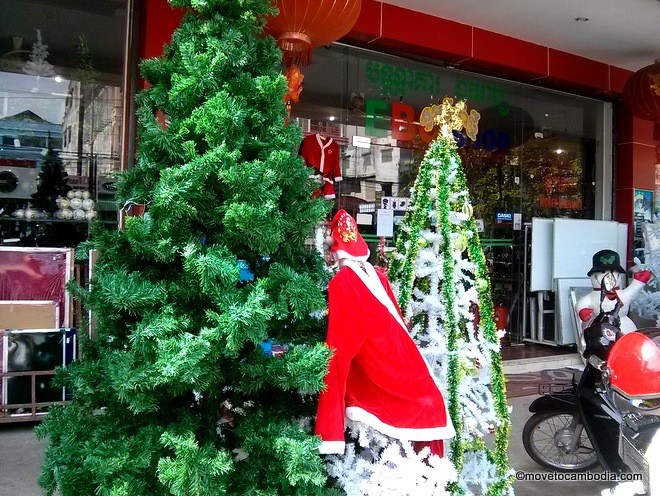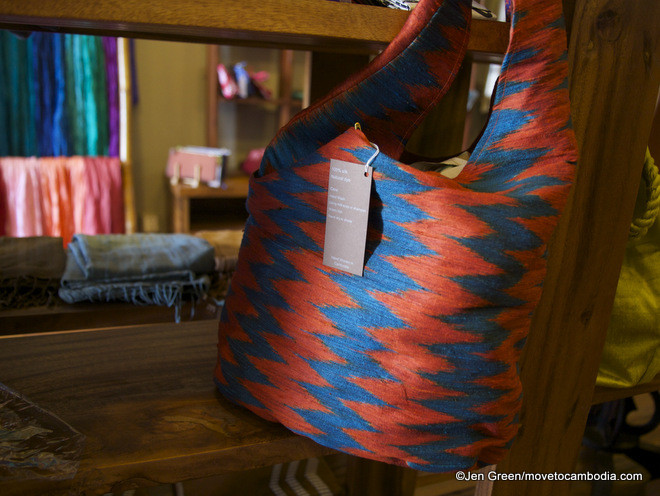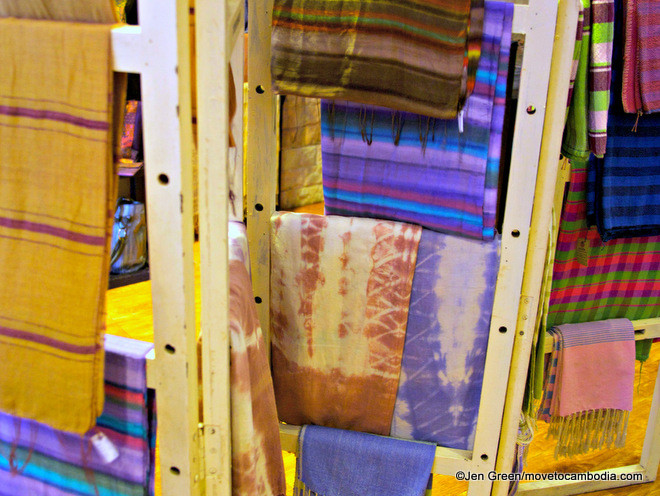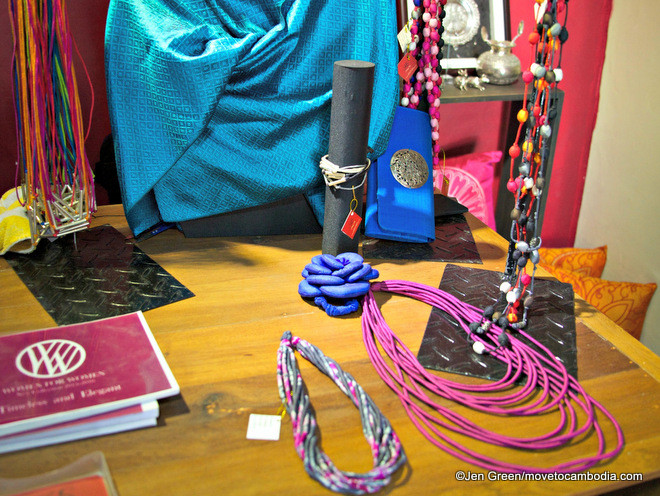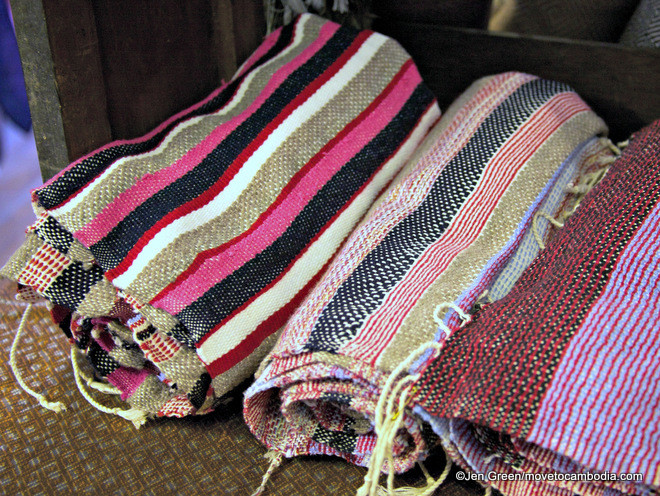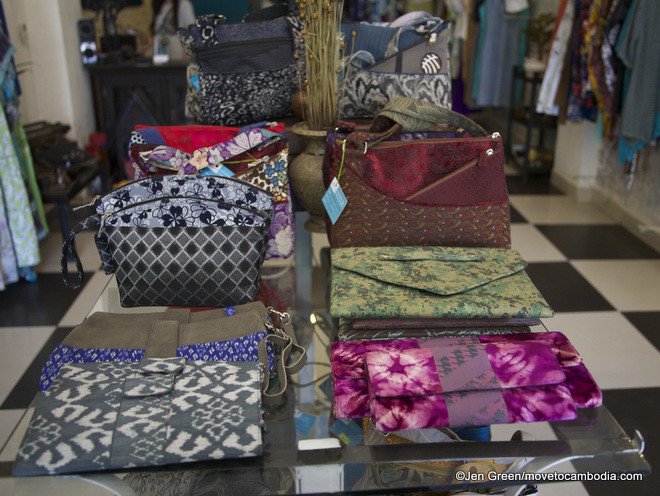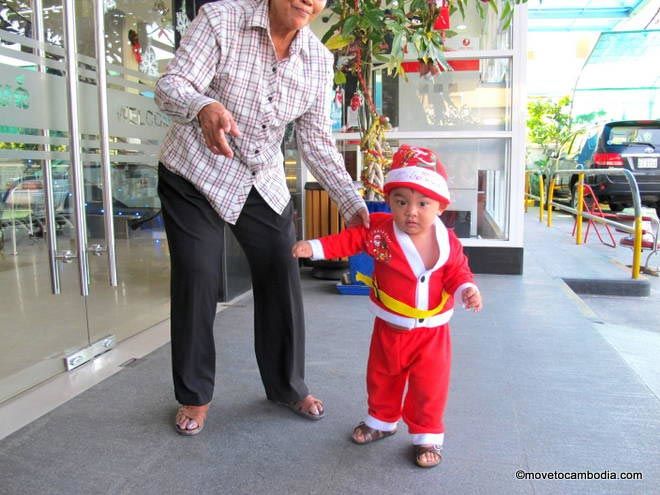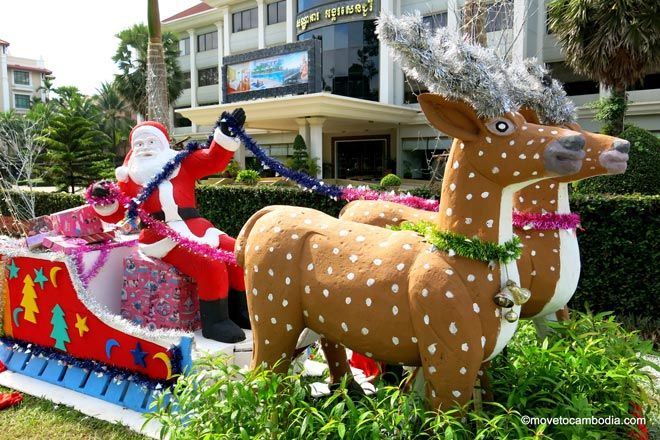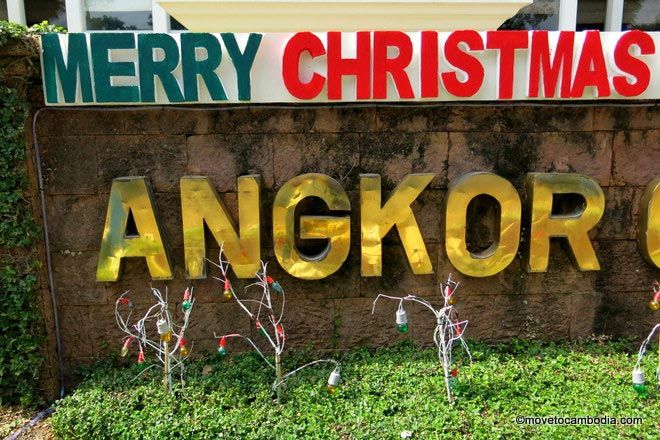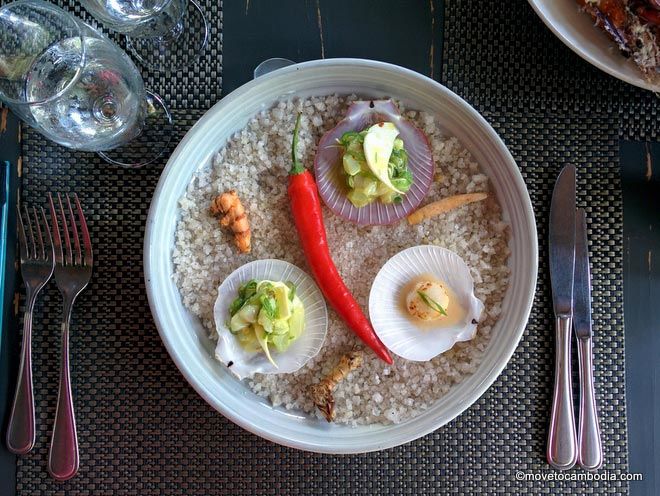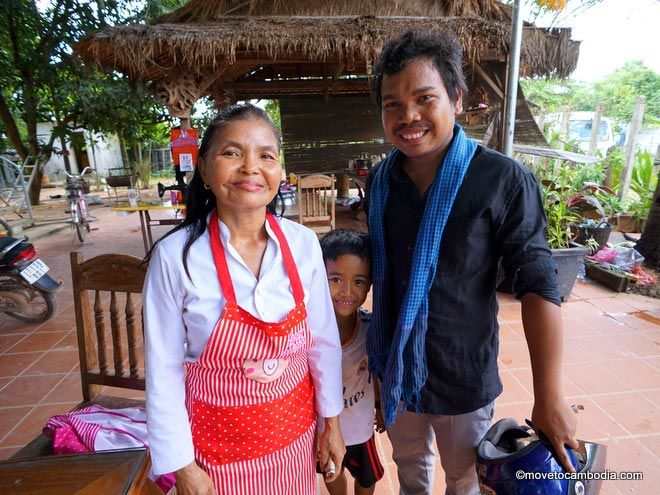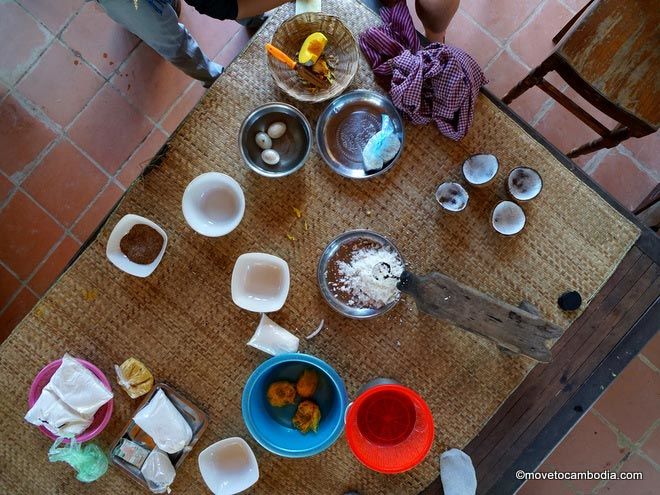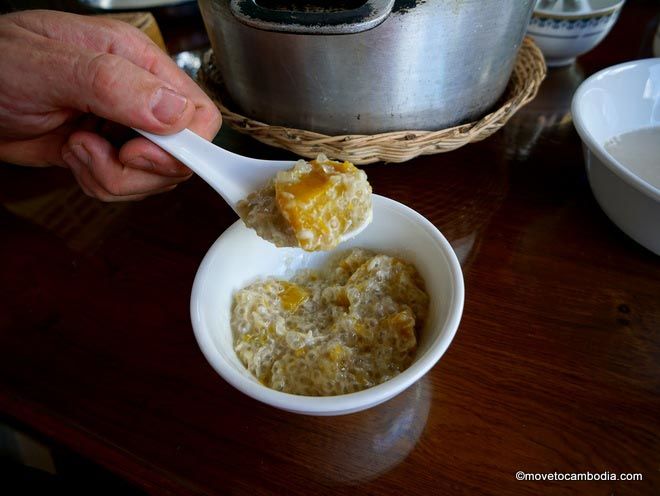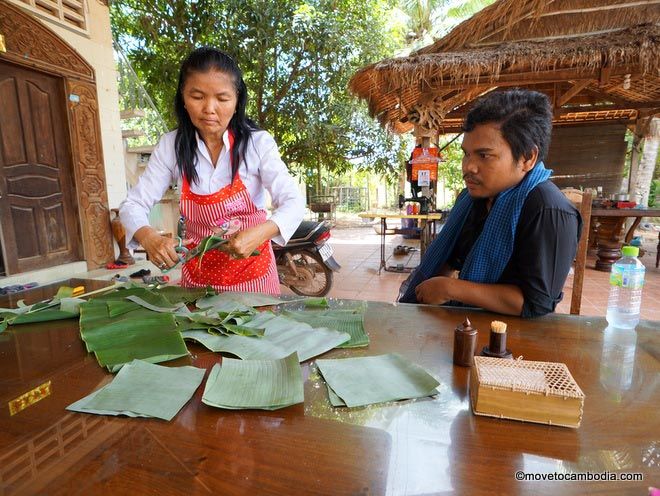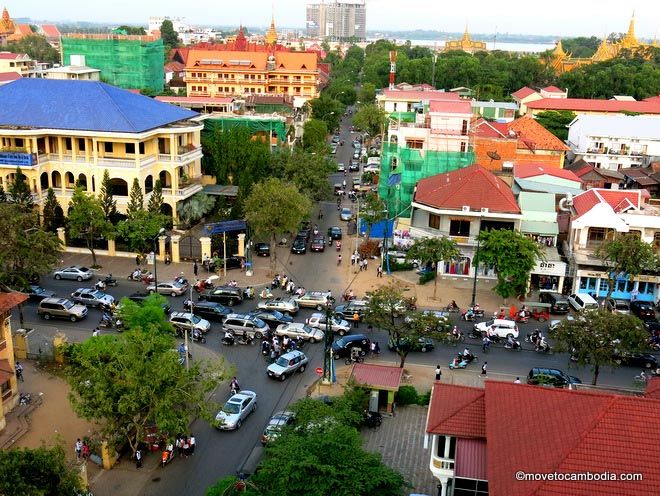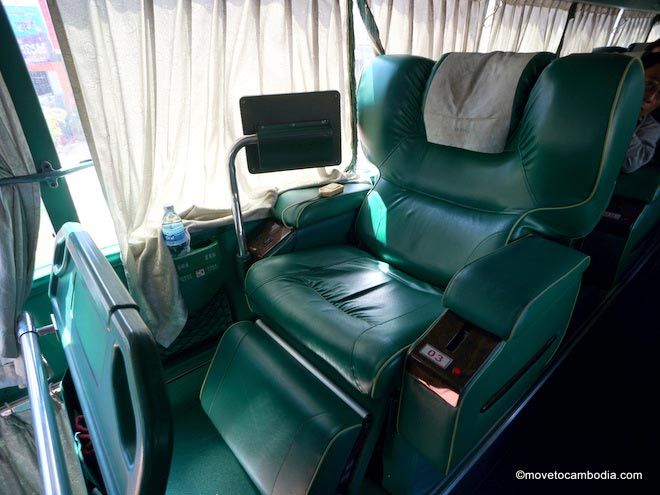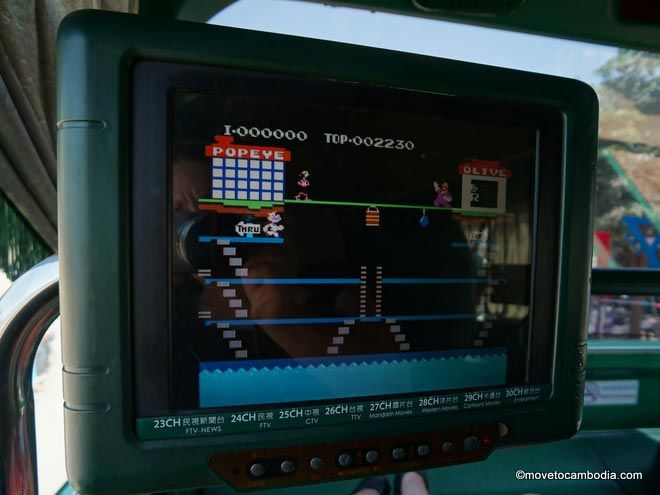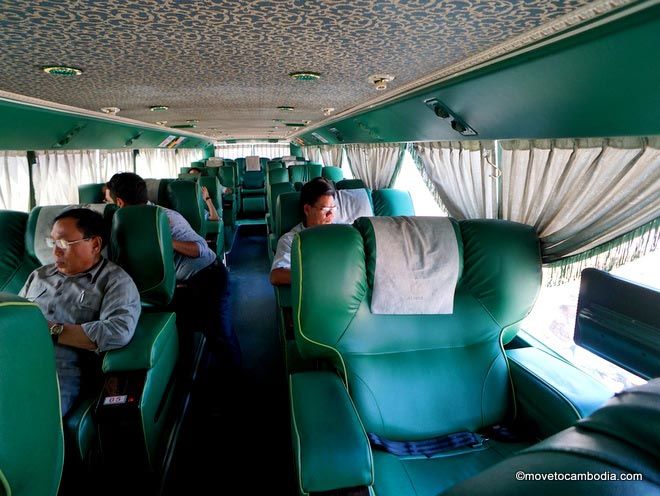We’ve just updated this post again because there are even more organic options now than ever (skip to the end for the new stores). These days, it’s not hard to find organic products in Phnom Penh if you know where to look. Even the big grocery chains usually carry some organic produce, but if you want the best selection, head to the organic and all-natural specialty shops.
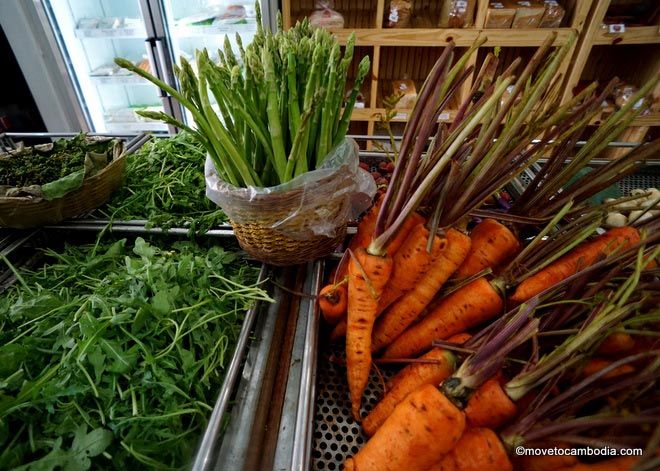
Organic produce in Phnom Penh? Maybe. Chemical-free produce in Phnom Penh? Definitely.
Street 63 in BKK1 has several stores that specialize in organic and chemical-free products and there are a few others around the city. These stores work with small farmers and suppliers around Cambodia to bring the freshest produce to Phnom Penh. Be aware, though, that there’s no regulation on the use of the word organic, but most of these stores are members of Cambodia Organic Agricultural Association (COrAA), and carry products that are either certified as chemical-free, or the more stringent classifier, organic.
The following are Phnom Penh’s best organic grocery stores:
Natural Garden

Keeping it chemical free at Natural Garden.
Natural Garden is the godfather of organic groceries in Phnom Penh, and a leading produce supplier for many of the city’s hotels and restaurants. A member of Cambodia Organic Agricultural Association (COrAA), they grow and sell organic rice and chemical-free vegetables. Their stores sell both the product they grow themselves in their farm in Sihanouk province, as well as chemical-free fruits and vegetables from sourced from all over the country, including the Svay Rieng agricultural cooperative. They’ve started labeling products, so it’s possible to know the provenance of what you’re buying, from Battambang oranges and Kampot tangerines to Siem Reap melons and Mondulkiri passionfruit. Their selection is probably the best in town, with the widest range of products and highest turnover. However, it’s not always necessarily clear which items are chemical-free as opposed to organic.
Natural Garden also sells fresh breads, French Le Terrior 69 meats and charcuterie, and dry goods, including an expanding selection of locally-produced products such as jams and palm sugar. They also have a lot of tasty products for take-away such as soups, pate and lentil salads, as well as items including fresh-made tofu and Japanese natto. Their flagship store on Street 63 is also their best.
Natural Garden
Open daily, 7:30 a.m. to 8:30 p.m.
213BC Street 63, BKK1, Phnom Penh
T: 023 555 2028
Street 240 at Street 51, Daun Penh, Phnom Penh
T: 060 444 058
ngkhmer.com
Green-O Farm

Green-O Farm, Phnom Penh
Green-O Farm works with farmers in several villages in Kampong Speu to supply them with chemical-free products. They’re also a member of COrAA, and are certified chemical-free, and working towards organic status. They carry a large selection of locally-grown vegetables, salad greens, and herbs, as well as “safe imported vegetables.” It’s sometimes unclear which of their products are local versus imported and organic versus not, but they do seem dedicated to the idea of organic local produce.
Additionally, they carry a selection of Cambodian-produced items like Ratanakiri coffee and Mondulkiri coffee and imported wines and dry goods. We were happy to see Coco Khmer coconut oil products, including not just cooking oil, but coconut oil beauty products. Green-O Farm also offers door-to-door delivery.
Green-O Farms
Open daily, 7:30 a.m. to 8:30 p.m.
216CD Street 63, BKK1, Phnom Penh
T: 023 667 0011; 012 300 955; 068 709 709
gofcam.com
Amarak Veggie Store

Newcomer Amarak does delivery boxes of chemical-free veg.
Amarak Veggie Store carries organic produce and locally-produced products, with everything from Pursat wild grape wine to Cambodian mango jam, as well as the more ubiquitous items like local palm sugar and Kampot pepper. They have a small but complete selection of high-quality fresh vegetables, herbs and fruits. The store also sells organic meats and ready-to-eat salads. Perhaps most excitingly (if this is the sort of thing that excites you — and it should) they offer weekly organic produce delivery boxes, where you get a random assortment of fruits and vegetables.
The store is the outlet for Amarak Farm, which is grows certified chemical-free produce. They’re a member of Cambodia Organic Agricultural Association (COrAA) and is working to receive its full organic certification. The farm isn’t far outside of Phnom Penh and they welcome visitors to come see how things work on a Cambodian organic farm. Soon, they will sell seeds directly to consumers who want to try their hand at growing their own vegetables. Amarak Farm is a supplier for chemical-free vegetables for many of Phnom Penh’s finest grocery stores, including Aeon Mall, Lucky Supermarket and Angkor Market. Skip the middle man and shop direct at Amarak Veggie Store.
Amarak Veggie Store
Open daily, 8:00 a.m. to 8:00 p.m.
219D Street 63, BKK1, Phnom Penh
T: 023 666 6889
amarakorganicgarden.com
Happy Farm

Happy Farm, happy stomachs.
Happy Farm carries a selection of locally-produced, chemical-free products from all around Cambodia. They’ve closed their flagship shop on Street 63 but their locations in Toul Kork carry a wide range of vegetables, herbs and produce, plus a selection of local fish and meats.
Happy Farm
Open daily, 7:00 a.m. to 8:00 p.m.
1B Street 137, Toul Kork, Phnom Penh T: 070 555 555; 070 555 520
18A Street Northbridge, Sen Sok, Phnom Penh T: 070 555 555; 070 555 530
170, Street 138, Toul Kork T: 070 555 555; 070 555 540
happyfarm.com.kh
Digby’s at DNAK Square
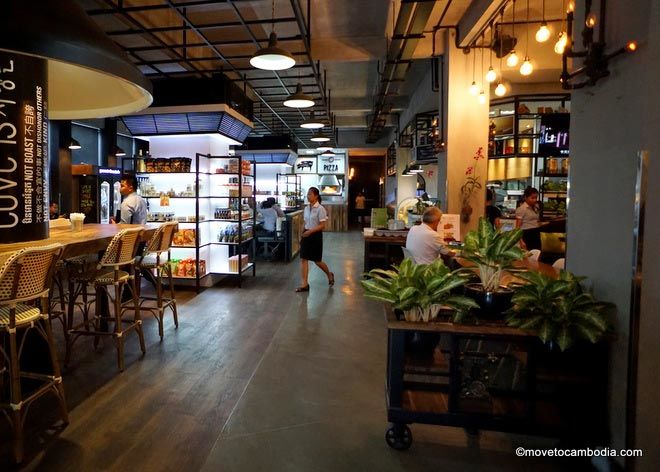
Digby’s has a small selection of organic products from Discovery Farms.
Digby’s offers a selection of produce from Discovery Farms, a farm in Kampong Speu that is certified organic by COrAA. (Discovery Farms also offers weekly organic produce baskets direct to consumers, call 096 294 8109). They don’t have a huge selection, but if you’re there anyway for a coffee, it’s worth a look. We get the sense that Digby’s had high hopes for being a major organic outlet, but their shelves are eerily bare, although they do have a nice selection of meats.
Digby’s at DNAK Square
Open daily, 7:00 a.m. to 10:00 p.m.
197 Street 63, BKK1, Phnom Penh
digbysgrocercafe.com
Veggy’s

We’re not sure if they’re organics, but they sure taste nice.
We are slightly skeptical of Veggy’s half-hearted claims that their produce is organic. In response to our question “is this organic?” we got a blank stare, then, “yes, maybe!” Despite this, it’s worth a visit because they do carry a wide range of mostly-imported fresh vegetables and a selection of hard to find gourmet products like pinenuts and Spanish cheeses and charcuterie. Read our full review of Veggy’s here.
Veggy’s
Open daily, 8:00 a.m. to 7:00 p.m.
23 St 240, Phnom Penh
T: 023 211 534
Aeon Supermarket
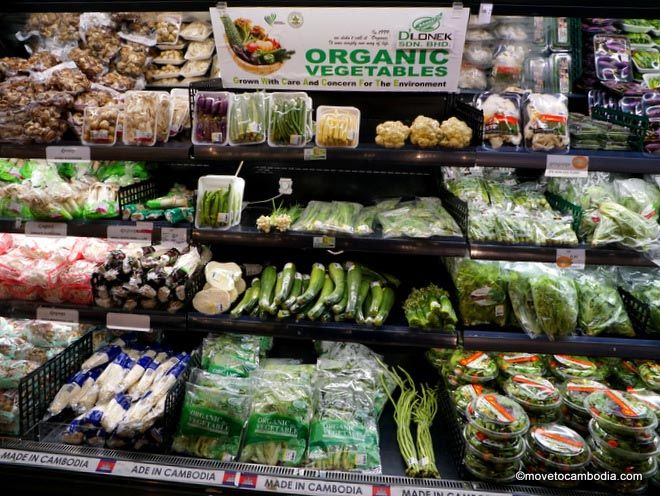
Aeon Mall has a surprisingly large selection of organic produce.
The Aeon supermarket has a surprisingly large selection of locally grown, organic vegetables, as well as organic vegetables imported from around Asia (including places they may have more stringent standards when it comes to growing and labeling organic). It appears that the imported produce is supplied by a Malaysian organic company, D’Lonek, but there’s surprisingly little information about them available online. What sets Aeon Supermarket apart from the rest on this list is that in addition to having a large selection of organic produce, they are also a full-service supermarket so you can do all of your shopping in one place, taking the hassle out of being healthy. Unfortunately it’s replaced by the hassle of having to go to the mall.
Aeon Mall Supermarket
Open daily, 9 a.m. to 10 p.m.
132 Sothearos Blvd, Tonle Bassac, Phnom Penh
T: 023 901 091
aeonmallphnompenh.com
Farm to Table
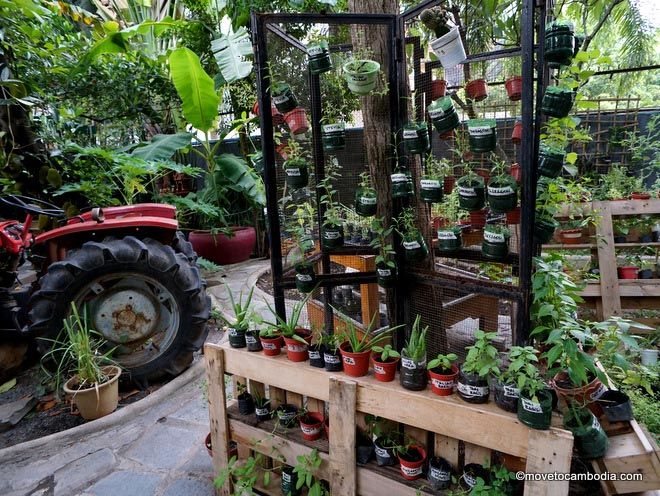
Farm to Table has a selection of Discovery Farms organics, as well as potted herbs to grow at home.
Farm to Table by Artillery has a selection of vegetables from Discovery Farms, a farm in Kampong Speu that is certified organic by COrAA. The selection is pretty small and the prices are high, but they have a personal touch and have on-site events and daily specials. They can also organize weekly organic vegetable boxes from Discovery Farms (Farm to Table is one of the pickup stops), plus they sell potted herbs on site for $5 each.
Farm to Table
16 Street 360, BKK1, Phnom Penh
T: 078 899 722
facebook.com/Farm-to-Table
La Vie Claire
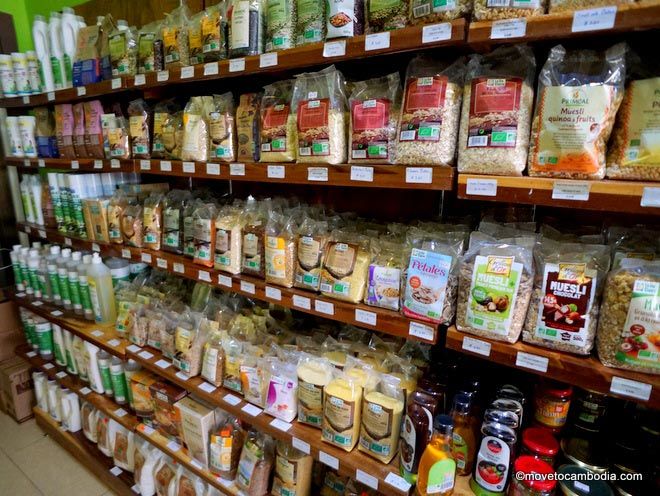
La Vie Claire brings French organic and GMO-free pantry items to Phnom Penh.
La Vie Claire is the latest organic shop that’s come to Phnom Penh. Filling a niche that was previously lacking in town, La Vie Claire specializes in organic and GMO-free pantry items and dry goods. They carry an extensive selection of grains, legumes, cereals, teas, juices, chocolate herbal remedies, organic baby food, and chemical-free cleaning and beauty products, among other things. They also have a large selection of various non-dairy milks and gluten-free products. La Vie Claire is a French health food store chain, and many of the products at the Cambodian branch are their own La Vie Claire house brand and certified to EU standards.
They also sell a selection of local products, including a tiny range of chemical-free produce. But there are lots of other places to get organic produce these days; we were most impressed with the selection of previously hard-to-find items like organic bulgur, buckwheat, and rye flour.
La Vie Claire
Open daily, 7:30 a.m. to 8 p.m.
53Eo Street 13, Daun Penh, Phnom Penh
T: 012 905 070
facebook.com/lavieclairecambodia
If you’re looking for Phnom Penh supermarkets and grocery stores, check out our dedicated blog post. For more information about Phnom Penh organics, visit Real Food: Cambodia, a blog dedicated to organic, gluten-free, and vegan eating in Phnom Penh.
Got a correction for one of our listings? Submit it here.
